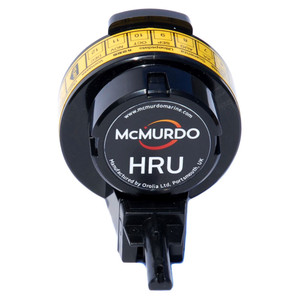
Emergency Position Indicating Radio Beacons (EPIRBs) for SOS Alerts
For the ultimate in offshore safety, our EPIRBs are critical. They transmit a distress signal to the nearest rescue services, providing your exact location, and are indispensable for deep-sea sailors and coastal cruisers alike.
What is an EPIRB?
An Emergency Position Indicating Radio Beacon (EPIRB) is a safety device designed to automatically transmit a distress signal to designated rescue services in case of an emergency at sea. These beacons are essential for anyone venturing into open waters, providing a reliable means of communication when traditional methods fail.
How EPIRBs Work
EPIRBs operate on designated frequencies to send a distress signal, which includes your exact location via GPS. This signal is picked up by satellites and relayed to the nearest rescue coordination center. The process typically involves:
- Activation: EPIRBs can be manually activated or automatically activated when they come into contact with water.
- Signal Transmission: The device transmits a continuous distress signal on 406 MHz, monitored by Cospas-Sarsat satellites.
- Location Identification: Modern EPIRBs are equipped with GPS to provide precise location data, drastically improving rescue response times.
- Rescue Coordination: The distress signal is relayed to the nearest search and rescue services, who then initiate a rescue mission.
Why You Need an EPIRB
Whether you're a seasoned deep-sea sailor or a coastal cruiser, having an EPIRB on board is a non-negotiable aspect of safety. Here’s why:
- Reliable SOS Communication: In the event of an emergency, EPIRBs provide a reliable means of communication when other devices fail.
- Accurate Location Tracking: With built-in GPS, EPIRBs offer precise location data, significantly aiding rescue operations.
- Automatic Activation: Many EPIRBs are designed to activate automatically upon contact with water, ensuring you can send an SOS even if incapacitated.
- Global Reach: EPIRB signals are monitored globally, ensuring that no matter where you are, help is always within reach.
Types of EPIRBs
There are generally two types of EPIRBs available:
- Category I - Automatic Release: These EPIRBs are designed to automatically release and activate upon contact with water.
- Category II - Manual Release: These require manual activation and are usually mounted in an easily accessible location on the vessel.
How to Choose the Right EPIRB
When selecting an EPIRB, consider the following factors to ensure you choose the best device for your needs:
- Signal Range: Opt for an EPIRB with a strong signal range to ensure your distress call is received promptly.
- Battery Life: Check the battery life to ensure it can last long enough in an emergency situation.
- GPS Accuracy: Ensure the EPIRB has reliable GPS capabilities for precise location tracking.
- Durability: Choose a robust and waterproof EPIRB to withstand harsh marine environments.
The Takeaway
Investing in an Emergency Position Indicating Radio Beacon (EPIRB) is a crucial step in ensuring your safety while at sea. These devices are not just gadgets; they are lifesaving tools that provide a critical communication link between you and rescue services. Whether you are navigating deep waters or cruising along the coast, an EPIRB can make the difference between a close call and a disaster.


